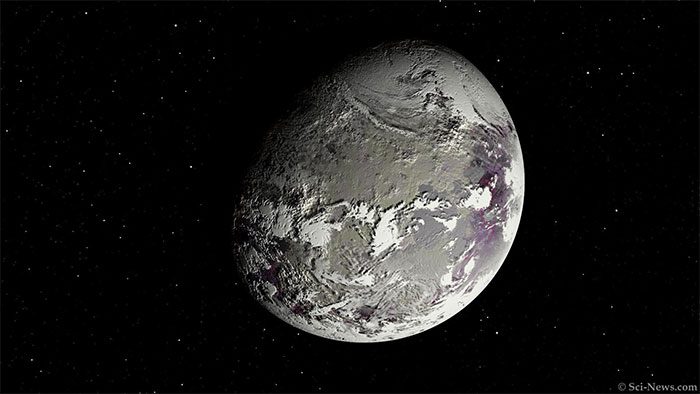Humanity may have seen a habitable planet long ago without realizing it, as it overlooked signs of a phenomenon similar to Earth.
According to Sci-News, a new study led by the University of Birmingham (UK) and the Massachusetts Institute of Technology (MIT, USA) indicates that a significantly lower amount of carbon dioxide compared to neighboring planets may be a sign of a world with liquid water and life.

A habitable planet is one where a significant amount of carbon dioxide in the atmosphere is “missing”? – (Graphic: SCI-NEWS).
Astronomers have discovered over 5,200 exoplanets to date, and they possess measurements to determine which planets lie in the “habitable zone” of their parent stars.
However, there remains a substantial gap between identifying a planet as “potentially habitable” and finding living organisms on it.
This new study has significantly narrowed that gap.
The authors focused on detecting liquid oceans, which nurtured the first life forms on Earth. It is the most crucial factor for researchers deciding whether to search for life on a planet.
In our Solar System, we can identify the presence of liquid oceans through “specular reflection”, which is the sunlight reflecting off the surface of liquids. This is how large lakes on Saturn’s moon Titan have been discovered.
However, with exoplanets, the vast distances hinder the search for specular reflection.
Nevertheless, while modeling, the research team discovered something “unique” that only worlds with oceans and life possess: A decrease in carbon dioxide in the atmosphere.
Our world has less carbon dioxide in the atmosphere compared to neighboring planets because the oceans have absorbed some of this gas.
Over billions of years, the amount of carbon dioxide absorbed by Earth’s oceans is nearly equal to the amount of carbon dioxide present in the dense atmosphere of the neighboring planet Venus.
Therefore, if in a distant star system there is a planet with significantly lower carbon dioxide than its “neighbors,” it is a strong candidate for the existence of liquid oceans and great hope for life.
The research team believes that new data, combined with the power of the youngest space telescope, the James Webb Space Telescope, will soon lead to breakthroughs in the coming years.
The first promising candidates they consider are the worlds within the TRAPPIST-1 system, which has seven planets, all of which share Earth-like characteristics.




















































